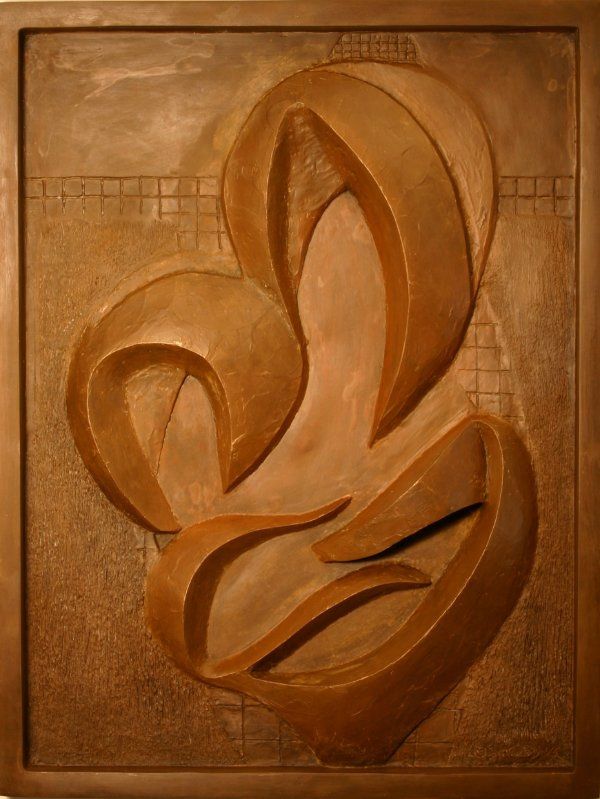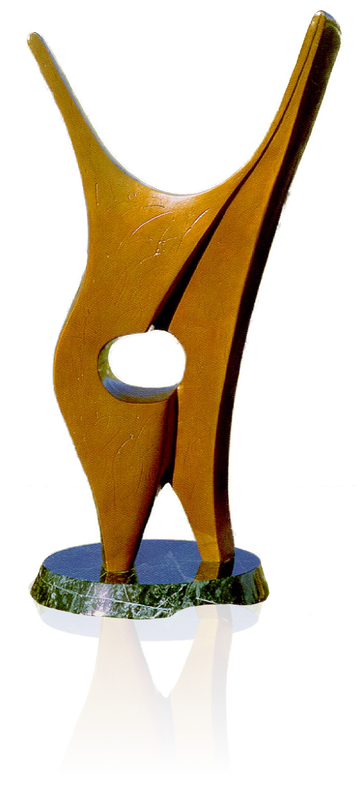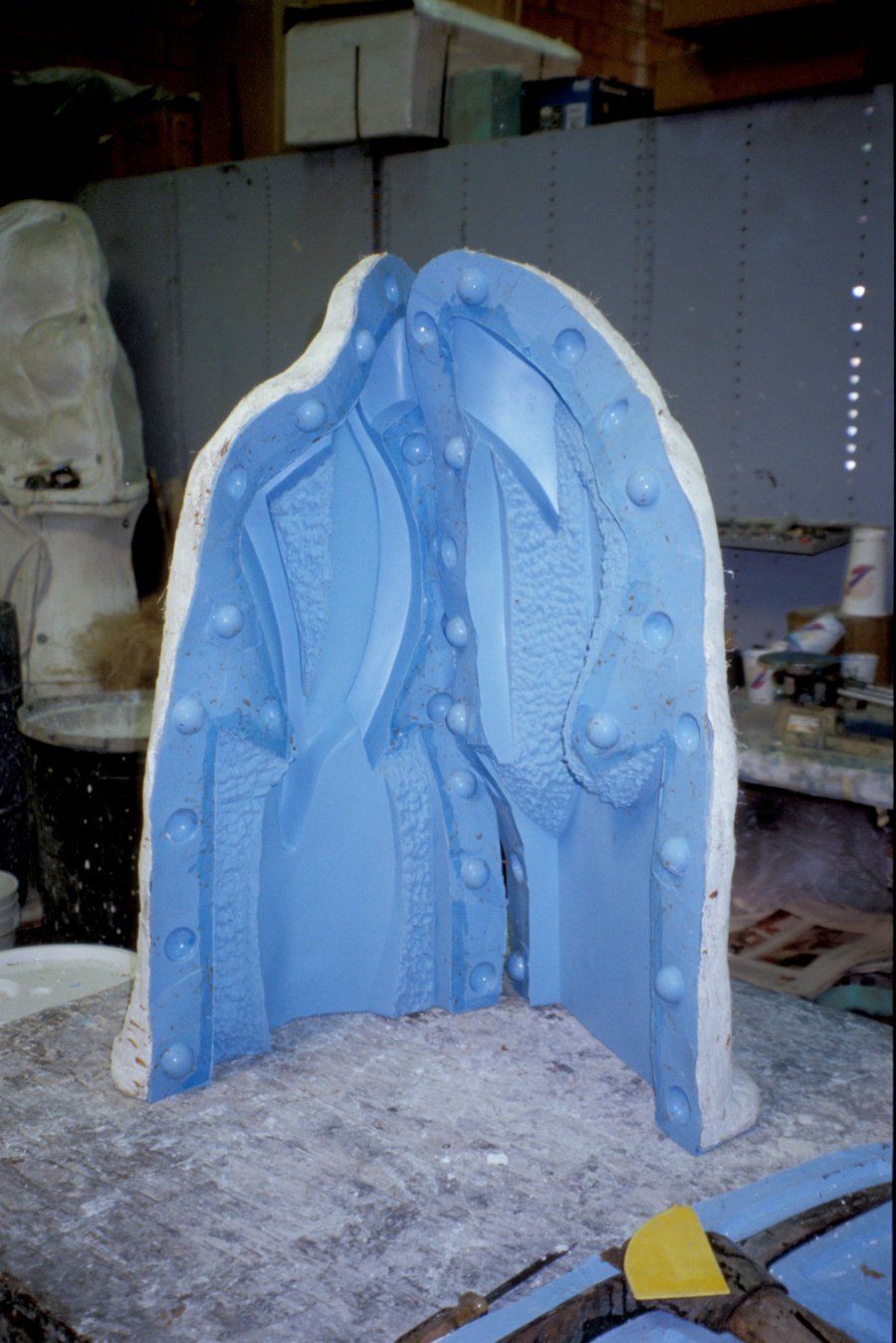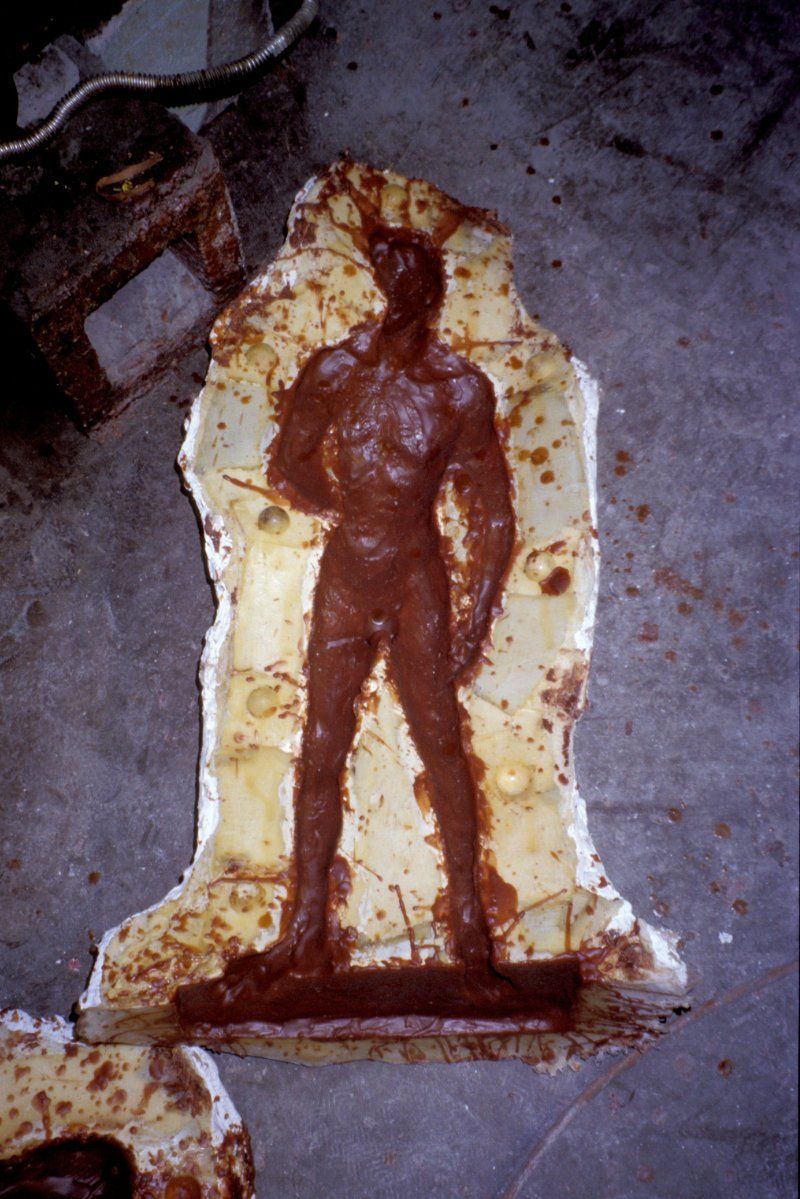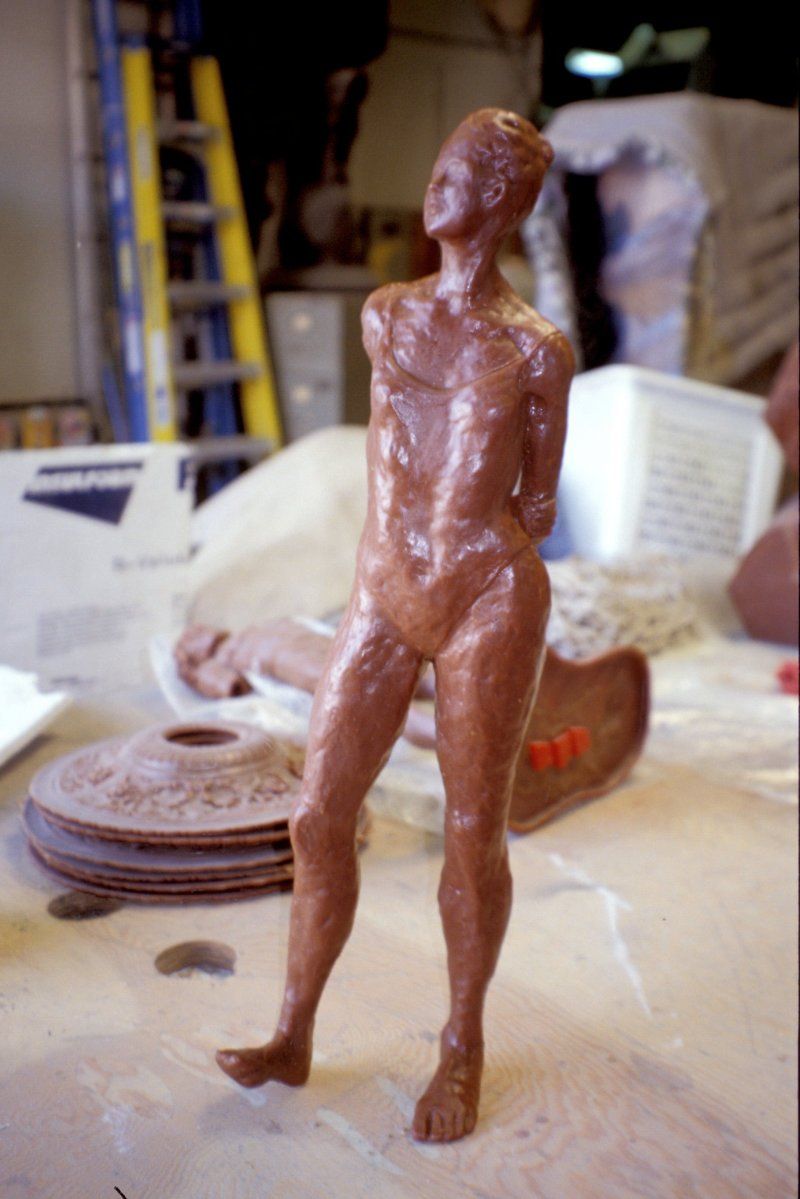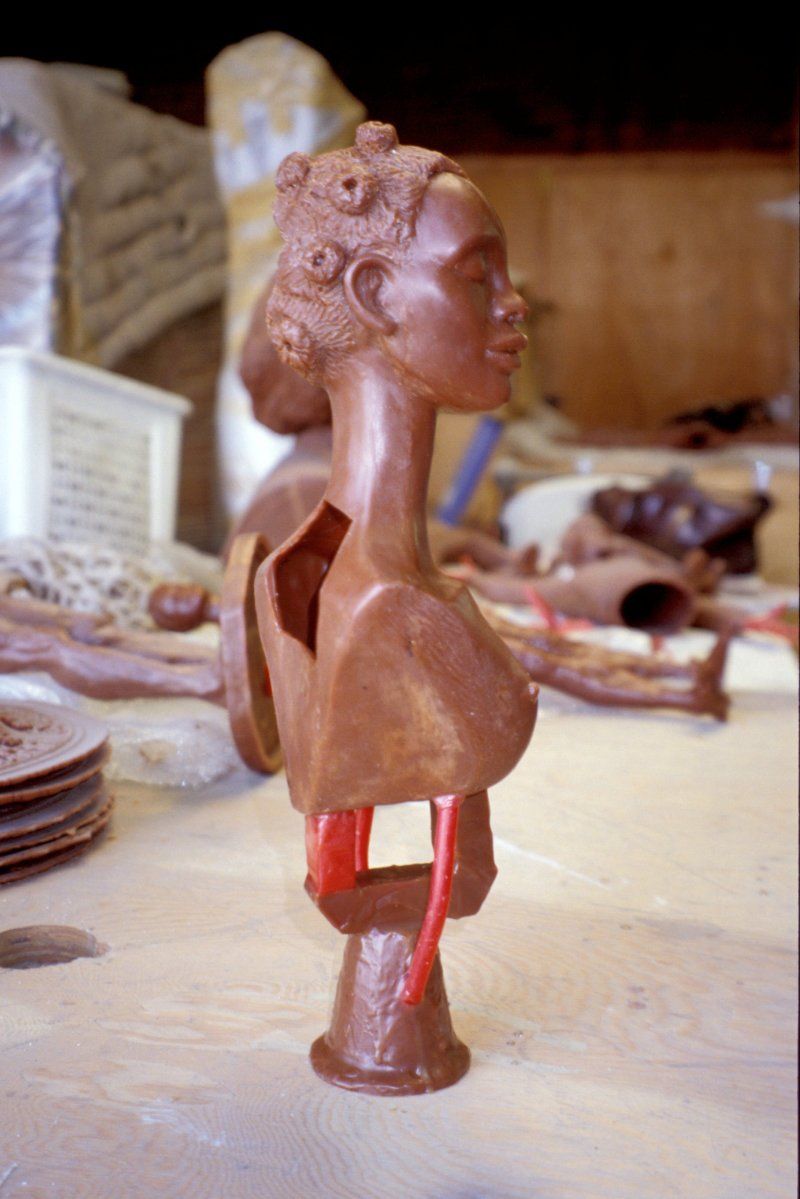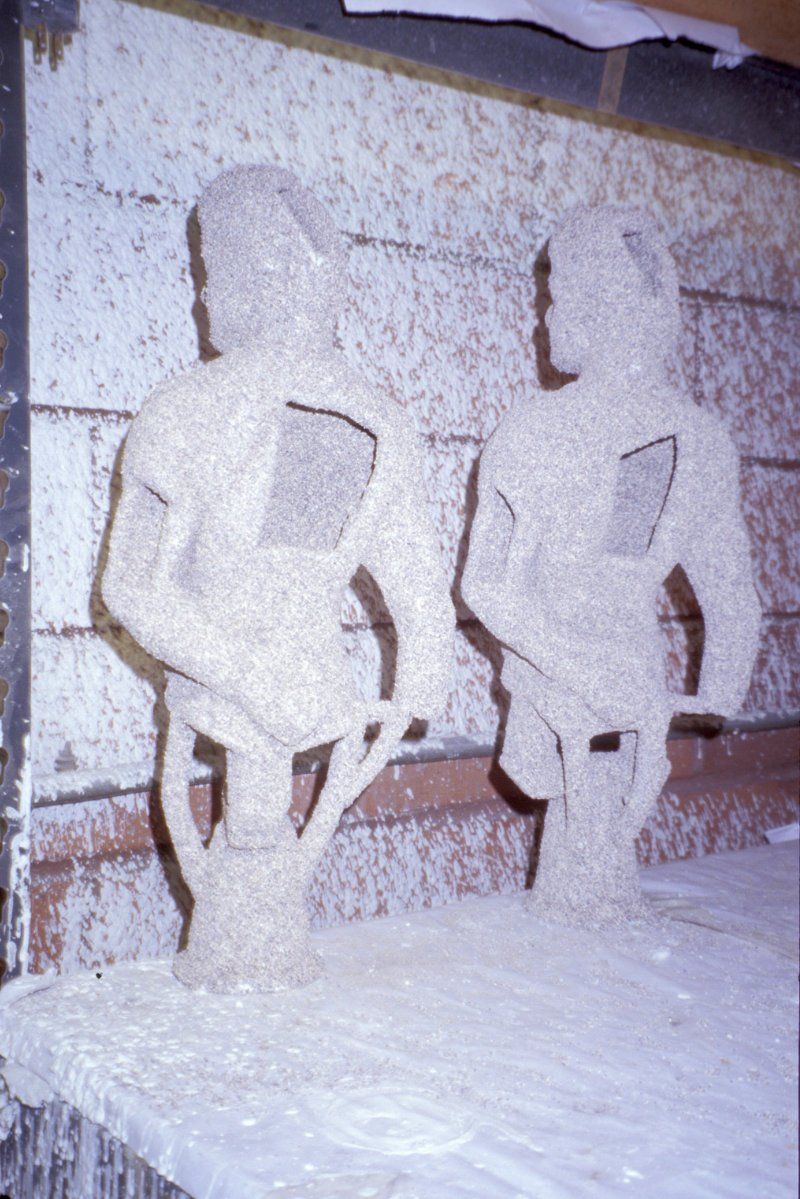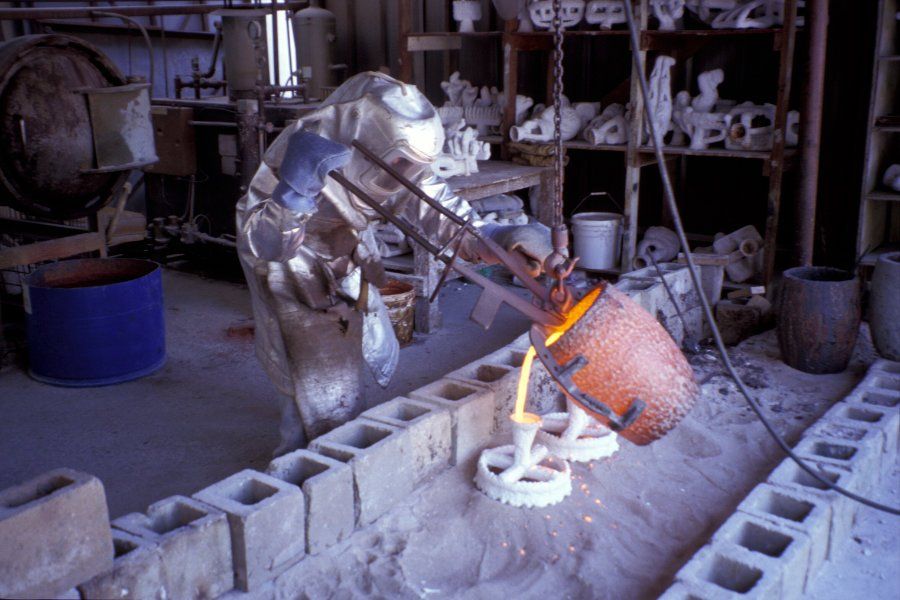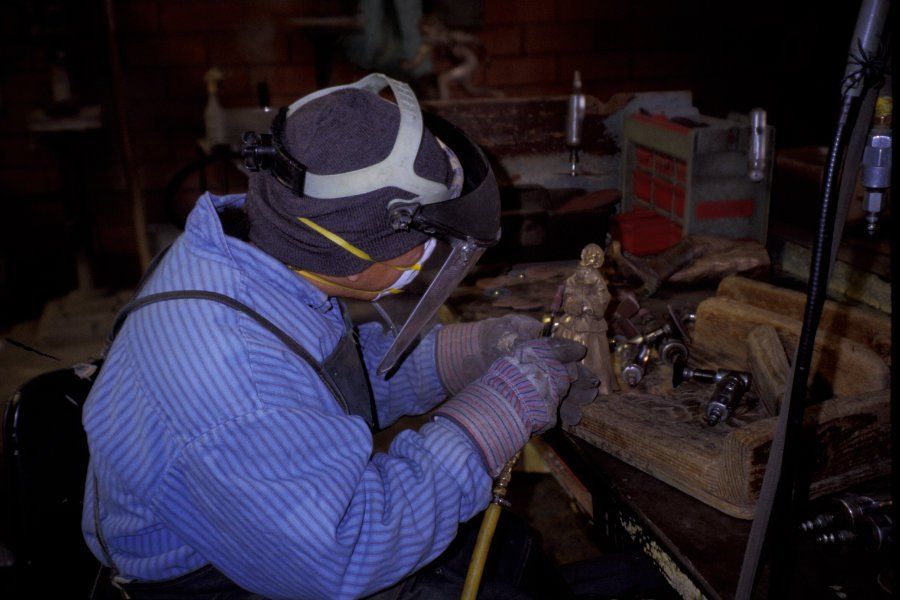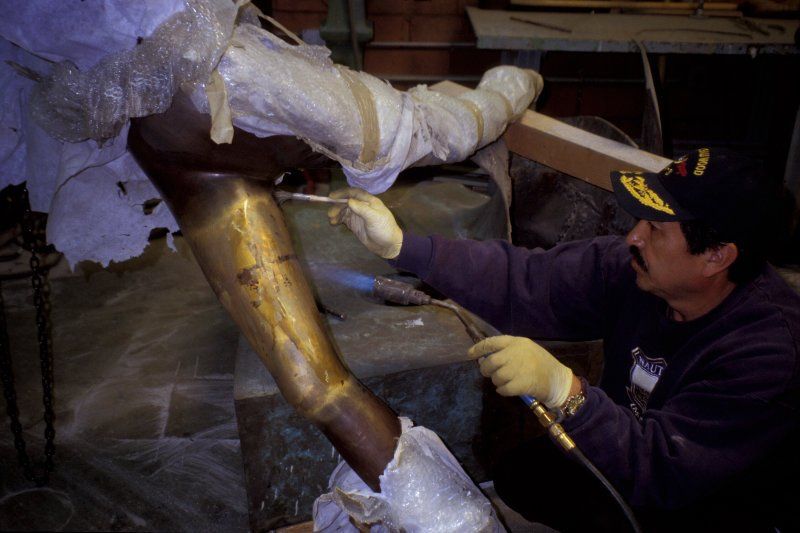COLD CAST PROCESS
Cold casting is a process that provides the look and feel of a lost wax pour for much less cost and time. The material that is poured in the cold cast process is a liquid bonding agent with finely ground powder. In this case, the finely ground powder is bronze metal. Once the casting is hardened in the mold, it is removed from the mold. The sculpture is then polished or patinaed with a chemical that will provide the desired color.
All of the presented cold cast sculptures can be cast by the lost wax foundry method, but at much higher cost and more time.
LOST WAX PROCESS
I can, and do, make my sculptures out of various metals if the client prefers. However, my metal of choice is bronze. I, like many thousands of artists before me, prefer bronze because of its unique properties. Ever since the lost wax process was developed, artists have chosen bronze for its structural strength, permanence, and resistance to corrosion. The lost wax process of bronze casting allows the metal to pick up the intricate modeling and detailing that I put into my sculptures. The reproductive quality is first rate.
Because the lost wax or "cire-perdue" process is a key element in the creation of my sculptures, I have chosen to give a general description of this very involved process. Every step must be done with precision for the next step to be as good as it can be.
Simply described, the lost wax process is pouring of molten metal into a mold or shell. The first step is to make a mold of the original sculpture (Picture #1). The mold will be used to "pull" as many waxes as there will be reproductions of the artist's work. For example, in a commission situation there will only be one pulled.
Once the mold is made, melted wax is poured into the mold. The excess wax is poured out of the mold leaving only a thin coating of wax on the inside of the mold. The wax (picture #2, 3) is allowed to cool.
After it has hardened, the wax copy of the original artwork is cleaned up. Seam lines and other imperfections are worked to bring it as close to the original work as possible. Once this is completed, an intricate system of wax rods (picture #4) are attached to the wax sculpture. These rods serve the purpose of allowing the molten bronze to flow freely into the final mold or "shell." The purpose of the shell (picture #5) is to encase the molten metal in a fireproof "jacket." This shell is built up around and inside the wax in several layers. Once this process is completed the entire wax/shell object is put into a burn-out oven..
The heat in the oven melts the wax and leaves a cavity in the shell where the metal will eventually be poured. The metal is heated to around 2100 degrees. It is then carefully poured (picture #6) into the empty shell. After allowing the metal to cool, the shell is broken away from the solidified bronze. The metal sculpture is then "chased." Chasing (picture #7) is the process of welding seams, sanding, and polishing the sculpture to a point where it is indistinguishable from the original. If the sculpture is to be colored or patinaed (picture #8 ) the color is then applied. The color options are numerous. Once the sculpture is completed to my very critical specification, I sign and number it to insure its authenticity.
I have chosen to give details about the lost wax process in order to give you a better idea of how labor intensive this very important process is. In order to create sculptural works that stand the test of time, with the kind of quality and sensitivity that I demand this process must be done carefully. It is a painstaking process that ultimately creates a sculpture that I am proud to sign as my own.

